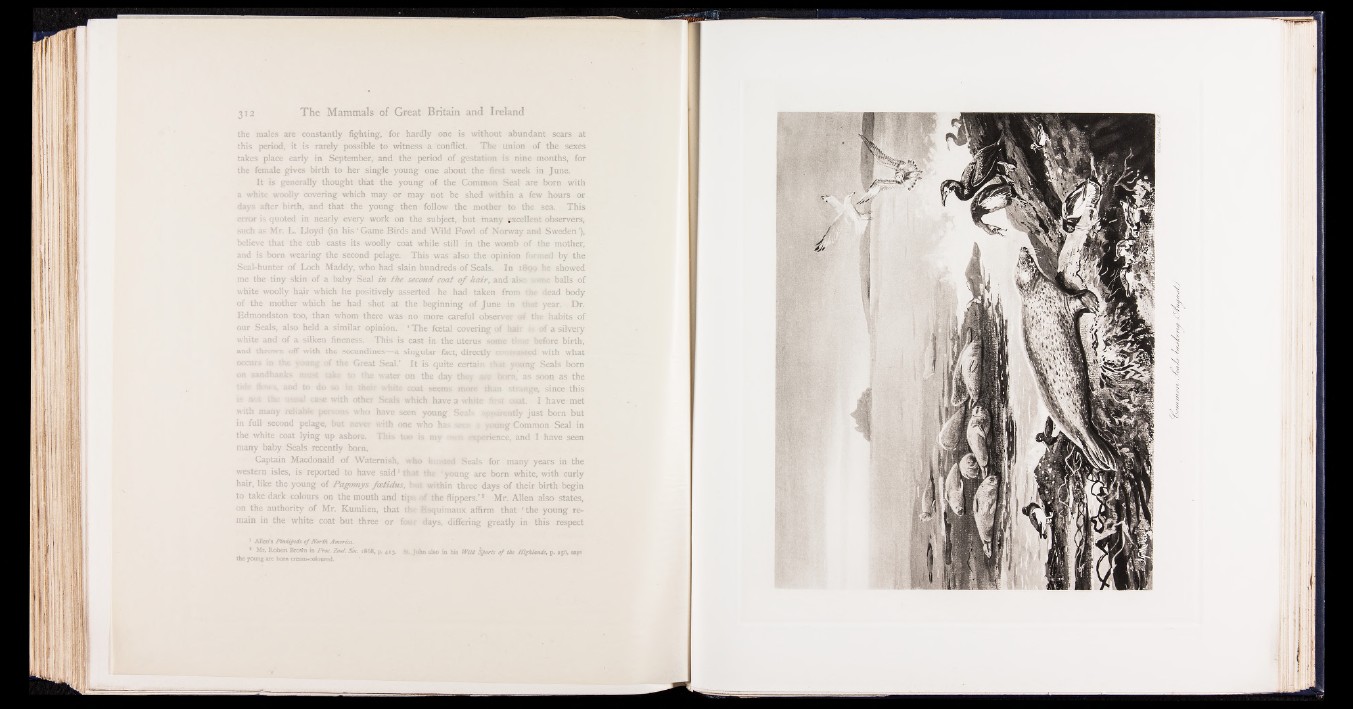
males are constantly fighting, for hardly one is without abundant scars at
> period, it is rarely possible to witness a conflict. The union of the sexes
es place early in September, and the period of gestation is nine months, for
female gives birth to her single young one about the first week in June.
It is generally thought that the young of the Common Seal are born with
irhite woolly covering which may or may not be shed within a few hours or
•s after birth, and that the young then follow the mother to the sea. This
)r is quoted in nearly every work on the subject, but many excellent observers,
h as Mr. L. Lloyd (in his ‘ Game Birds and Wild Fowl of Norway and Sweden ’),
believe that the cub casts its woolly coat while still in the womb
and is born wearing the second pelage. This was also the opinion
Seal-hunter of Loch Maddy, who had slain hundreds of Seals. In i
me the tiny skin of a baby Seal in the second coat o f hair, and als
white woolly hair which he positively asserted he had taken from
of the mother which he had shot at the beginning of June in
Edmondston too, than whom there was no more careful observer <3
our Seals, also held a similar opinion. * The foetal covering of hath
white and of a silken fineness. This is cast in the uterus some tin
and thrown off with the secundines— a singular fact, directly contrat:
occurs in the young of the Great Seal.' It is quite certain thaï y os
in full second pelage, but never with one
the white coat lying up ashore. This too
many baby Seals recently born.
Captain Macdonald of Waternish, w
western isles, is reported to have said1 th
hair, like the young of Pagomys feetidus, :
to take dark colours on the mouth and tip
on the authority of Mr. Kumlien, that th
main in the white coat but three or fou
the mother,
11 ciJ by the
he showed
me balls of
dead body
year. Dr.
e habits of
of a silvery
efore birth,
with what
Seals born
cm the day they are born, as soon as the
coat seems more than •strange, since this
vhich have a white firs? coat. I have met
en young. Seab apparently just born but
le who has sees •. young Common Seal in
•o is my experience, and I have seen
who hunted Seals for many years in the
hart the ‘ young are born white, with curly
but within three days of their birth begin
' the flippers.’ 2 Mr. Allen also states,
Esquimaux affirm that ‘ the young relays,
differing greatly in this respect
1 Allen’s PinMpeds o f North America.
* Mr. Robert Brown in Proc. Zool. S ’oc. 1868, p. 413. Sc. John also in his Wild Sports o f the Highlands, p. 256, says
the young are bora cream-coloured.